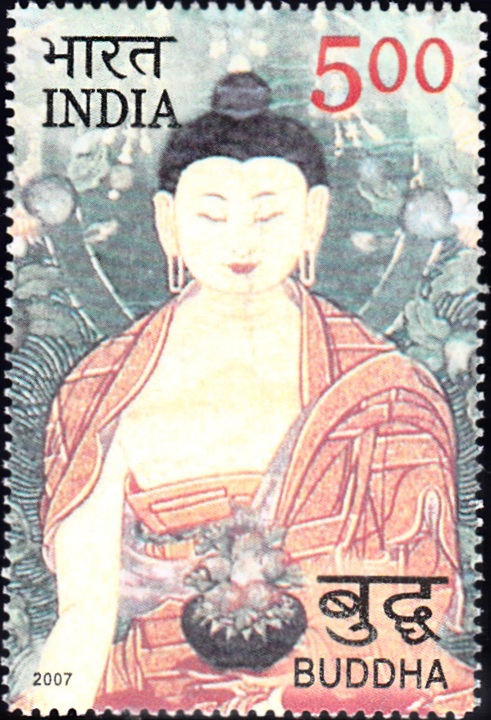
India on Mahaparinirvana of Buddha 2007
A Miniature Sheet consisting of 6 nos of commemorative postage stamps on the 2550 years of Parinirvana of the Gautama Buddha Shakyamuni :
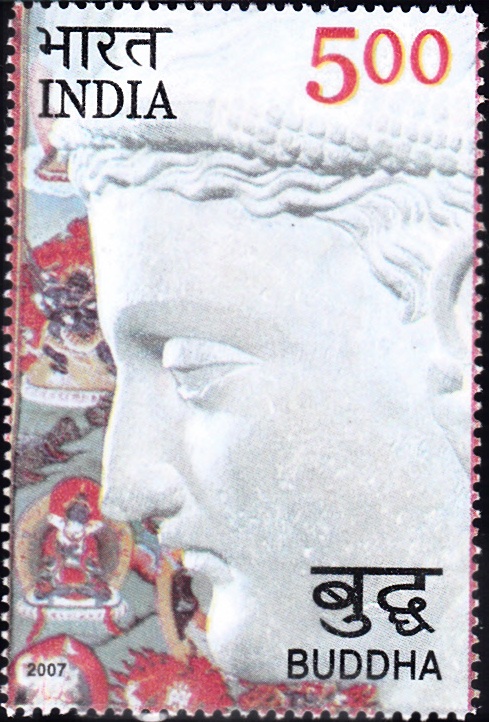
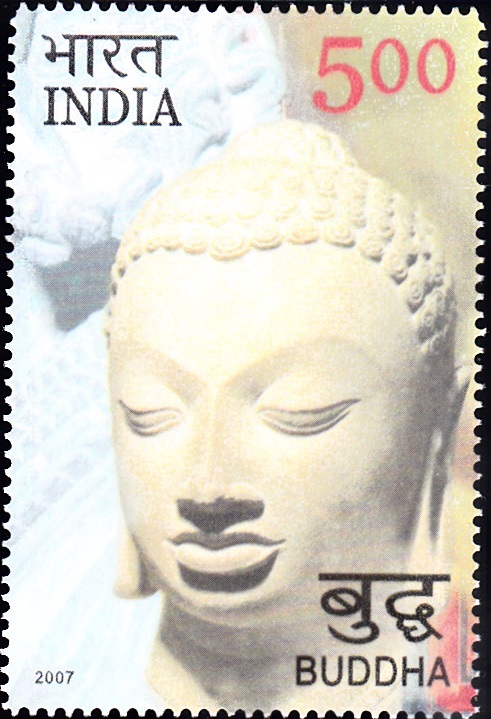

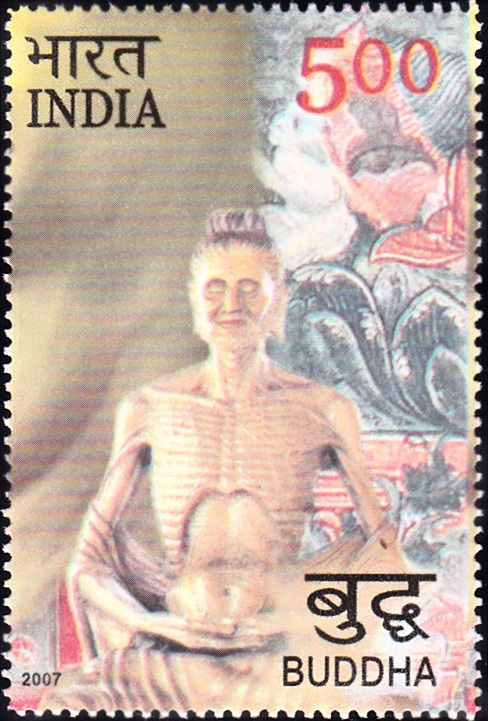
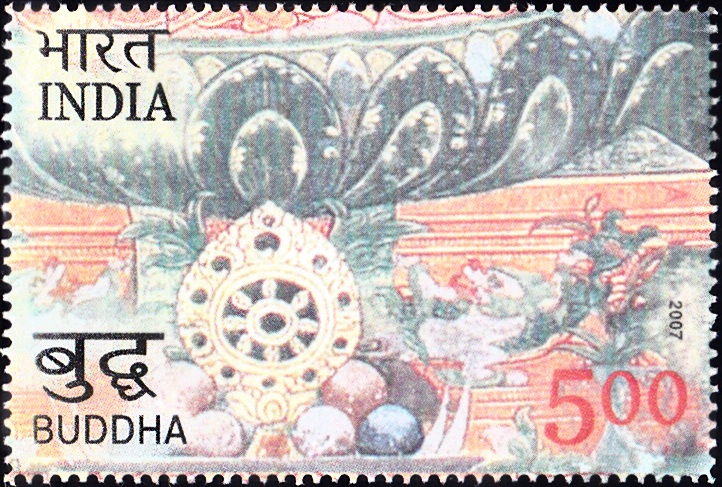
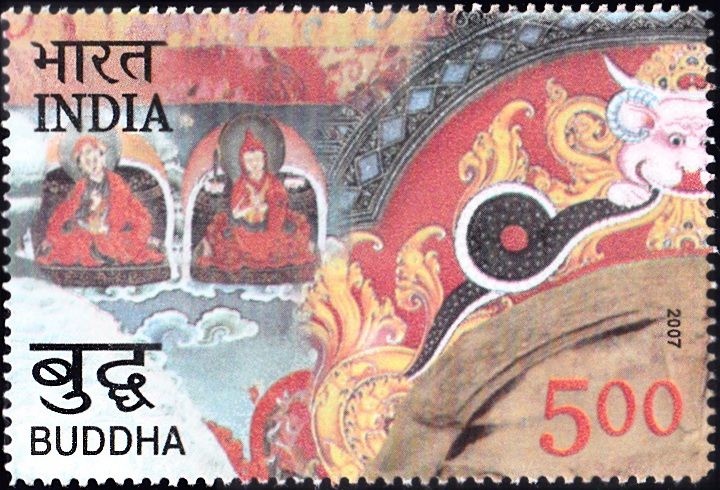
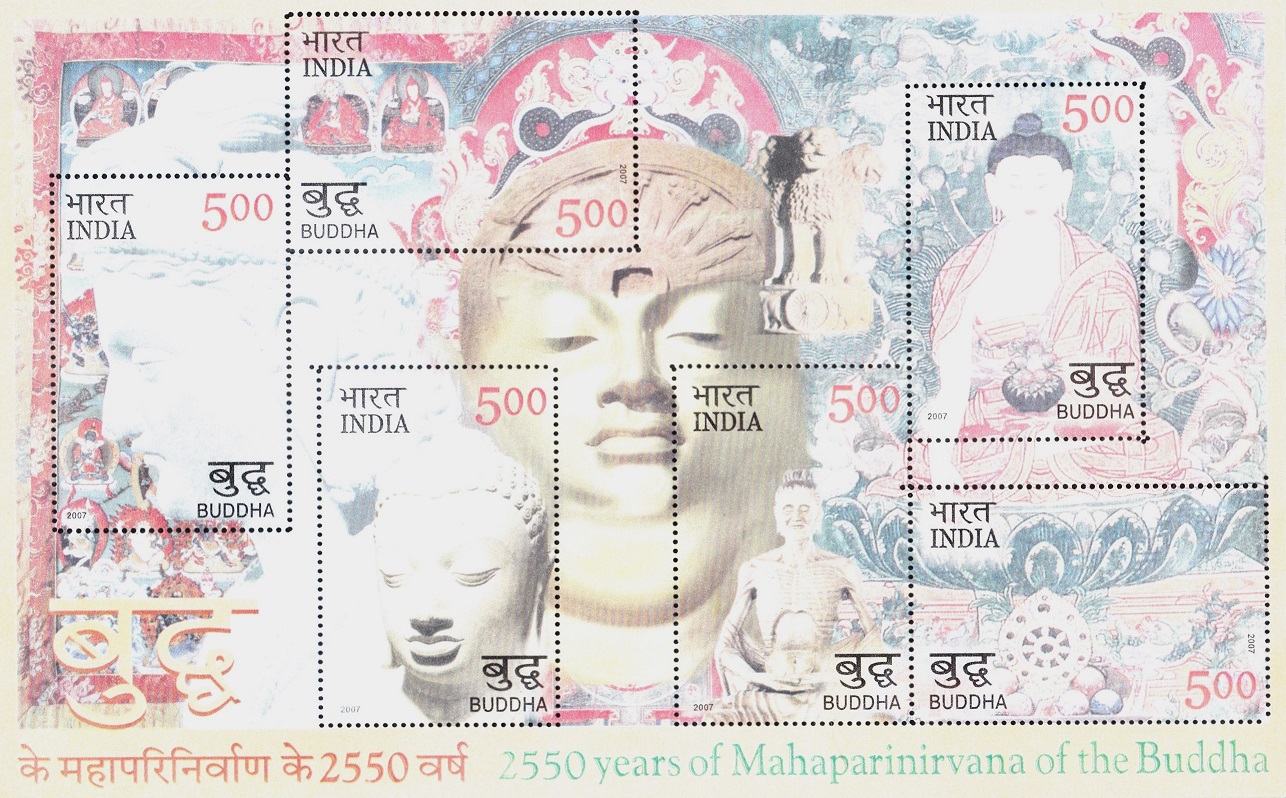 Issued by India
Issued by India
Issued on May 2, 2007
Issued for : The Department of Posts is proud to release a set of six postage stamps on the ‘Buddha‘ to commemorate the occasion.
Design : The first stamp depicts a statue from the Gandhara period of Siddhartha when he was still a prince. The second stamp shows a sculpture from Myanmar where Buddha is an ascetic having renounced royal luxuries to meditate on the essential Truth. The third stamp depicts the blissful head of the meditating Buddha (Dharmachakrapravartan or Turning-the-wheel-of-law Buddha) from Sarnath, India, also done in the Gandhara style. The fourth stamp depicts the Bhumisparsha Buddha holding the nectar of immortality in a jar. Some of the numerous incarnations of Buddha, past and future as well as pert of the cycle of creation and dissolution of the many worlds feature in the fifth stamp. Hinayana symbols such as the Lotus indicating the blossoming of inner harmony which is the basis of all existence, and the dharma chakra with the various stages of development is shown in the sixth stamp. Also seen in one corner is the bhumisparsha mudra which proclaims ‘the earth is my witness’.
Credits :
Stamp & FDC : Bharati Mirchandani
Cancellation : Alka Sharma
Type : Miniature Sheet, Mint Condition
Colour : Multicolour
Denomination : 500 Paise each
Stamps Printed : 0.6 Million each
Miniature Sheet : 0.4 Million
Printing Process : Photogravure
Printer : India Security Press, Nasik
About :
- “The kind of seed sown, will produce that kind of fruit. Those who will do good, will reap good results.
Those who will do evil, will reap evil results.
If you carefully plant a good seed, you will joyfully gather good fruit.”
— Dhammapada - A spiritual teacher and the historical founder of ‘Buddhism’, Siddhartha Gautama is universally recognized by Buddhists as the ‘Supreme Buddha’ of our age. Any person, who has awakened from the ‘sleep of ignorance’, is called a Buddha. Siddhartha Gautama, the Buddha, is thus only one among many other Buddhas before and after him. His teachings are oriented towards attainment of this kind of awakening, also called enlightenment, bodhi, liberation or nirvana. Any person achieving this state through the teachings of a Buddha becomes an arahant.
- The personal name of Buddha, ‘the Enlightened’, was Siddhartha, but he was better known by his gotra name Gautama. He was also called Sakyasimha, the Lion of the Sakya, and Sakyamuni, ‘the Sakyan sage’, as he was born in the Kshatriya clan of the Sakyas, of which his father Suddhodana was the chief. The latter’s capital was at Kapilavastu (variously identified with Piprahwa, District Basti, Uttar Pradesh and Tilaurakot, District Taulihawa, Nepalese Terai, both near Rummindei). Before his birth, his mother, Mahamaya or Maya, of the family of the Koliyas, had a dream in which a white elephant entered her body. Brahmin priests interpreted this to indicate the conception of a son who would either rule the world or renounce everything and become a great spiritual leader.
- Buddha was born in Lumbini (in present day Nepal) and died around 80 years later in Kushinagar (India). While the date of his birth has been variously reckoned, it is now generally accepted that he was born in 563 or 566 B.C. In the five centuries following the Buddha’s passing, Buddhism spread like a wave throughout the Indian subcontinent, and in Asia where it has flourished for over two millennia. Today Buddhism continues to attract followers around the globe, and is one of the major world religions.
- At the age of 80, Buddha announced that he would enter ‘Parinirvana‘ or the final deathless state, abandoning the earthly body and attaining freedom from the cycles of birth and rebirth. Ever since, Kushinagar in India has been turned into a glorious memorial site of the Mahaparinirvana of the Buddha with stupas, caityas, and viharas like the Mahaparinirvana-vihara and Makutabandhana-vihara, built by devout Kings and followers.
- In fact, the purnima or full-moon in the month of Vaisakha is connected with three important events in the life of the Buddha, his janana or birth, his attainment of jnana or enlightenment, and his mahaparinirvana or achievement of the unconditioned state. It is, therefore, the most sacred day in the Buddhist calendar. According to Theravada Buddhism, the Buddha‘s parinirvana occurred on the full moon of Vaisakha 544 B.C., and the full moon on May the 13th, 2006, marked beginning of the 2550th year of the Mahaparinirvana of Gautama Buddha, the one who attained bodhi or supreme knowledge.
- Text : Based on material provided by the Ministry of Culture.


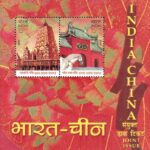

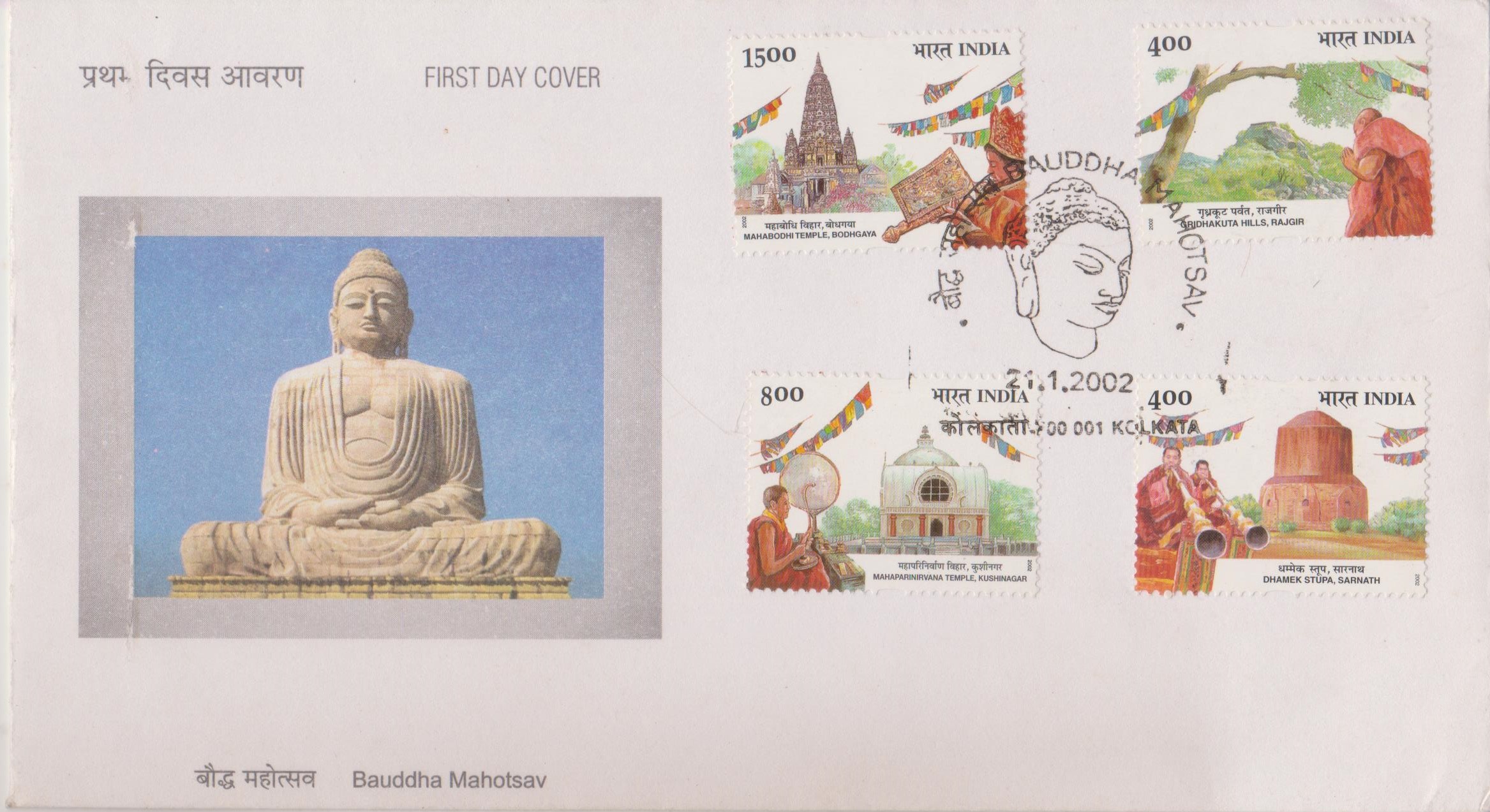
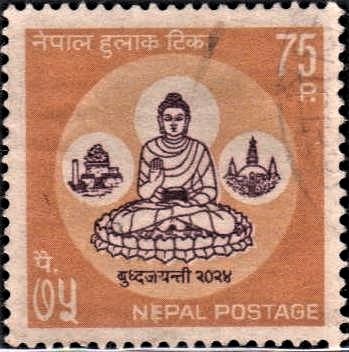
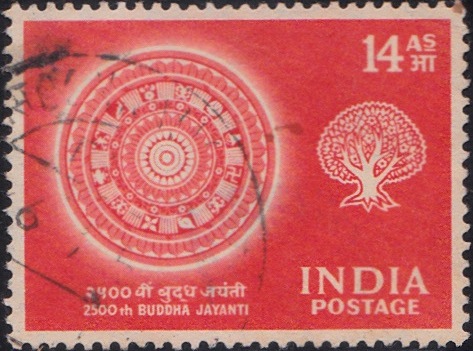
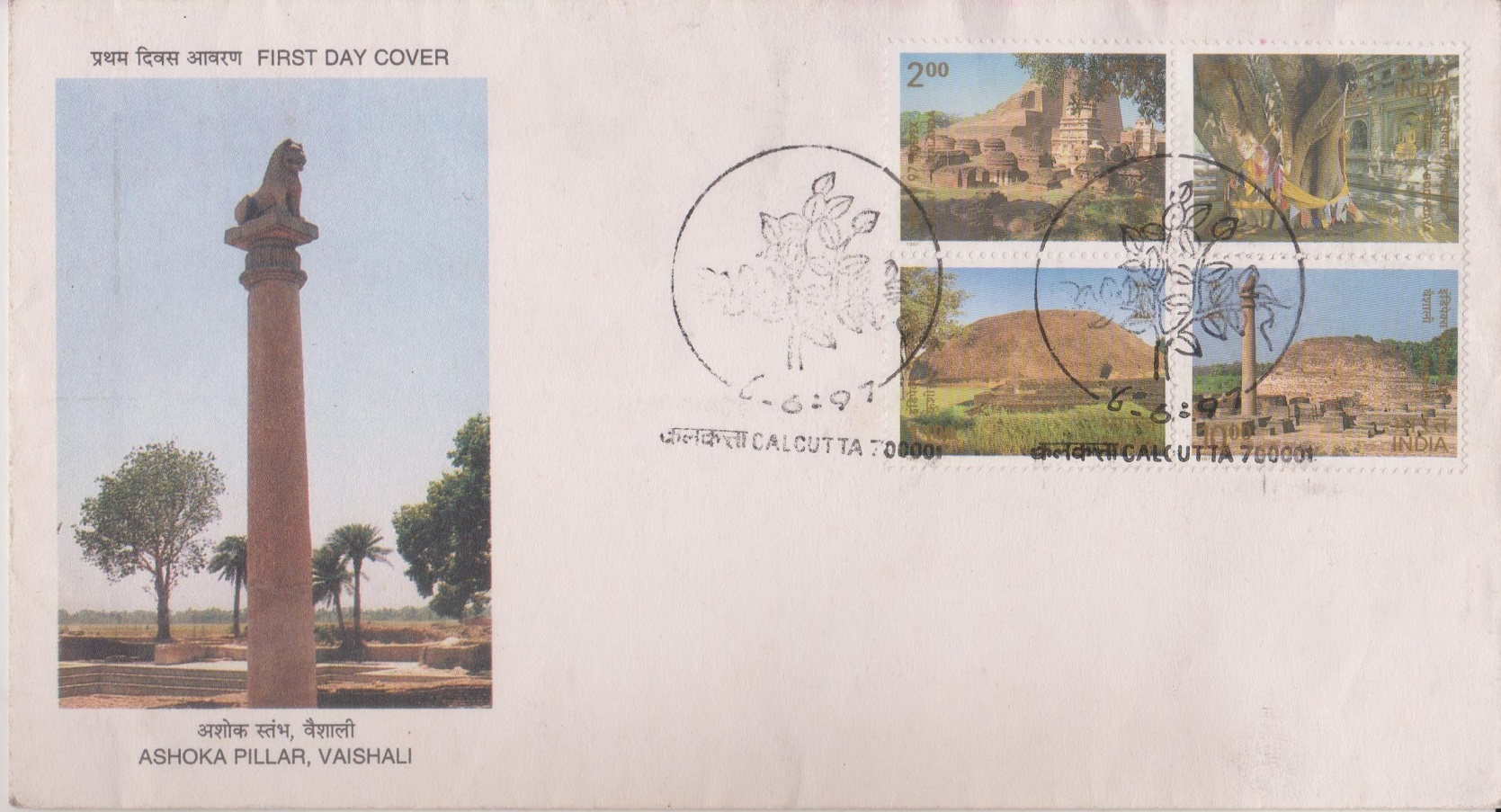
Very good Collection.
[…] He grew up in an atmosphere of traditional Sinhala piety. From a young age, he took refuge in the Buddha, the Dharma and the Sangha, and promised to observe the Five […]
[…] Lanka relations lies on religious and cultural similarities. Lumbini being the birthplace of Lord Buddha is one of the holiest places for the Sri Lankan Buddhists’ pilgrimage and every year more than […]
[…] the four sides by the colourful prayer flags, which flutter in the breeze and send the prayers to Lord Buddha. The guardian deities and the Wheel of Life can be seen here and are in good condition. It also has […]
[…] religiosa) is a significant epitome of Buddhist tradition as it was at the foot of this tree that Gautama Buddha obtained his Bodhi or […]
[…] policy at the moment of his greatest victory. It was again our land which produced the great Buddha, who preached peace and understanding among all mankind. It was again our country which gave birth […]
[…] Lord Buddha who gave the message of peace and non-violence to the world also paved the way for a special bond between India and Japan. For nearly 2500 years the Japanese people have regarded India as a sacred country which has been a source of inspiration to them, through the spirituality of Buddhism. India has in its turn admired the phoenix-like economic reconstruction of Japan rising from the ashes of World War II. […]
[…] huge hemispherical dome with a height of 54.0 ft consists of a central chamber where the relics of Lord Buddha are placed. Four ornamental gateways facing four directions and a balustrade surrounding the Stupa […]
[…] had a history of Republics that existed before and after Buddha. One such republic was Lichchhavi which was a part of Vajjika territory and contemporary village of […]